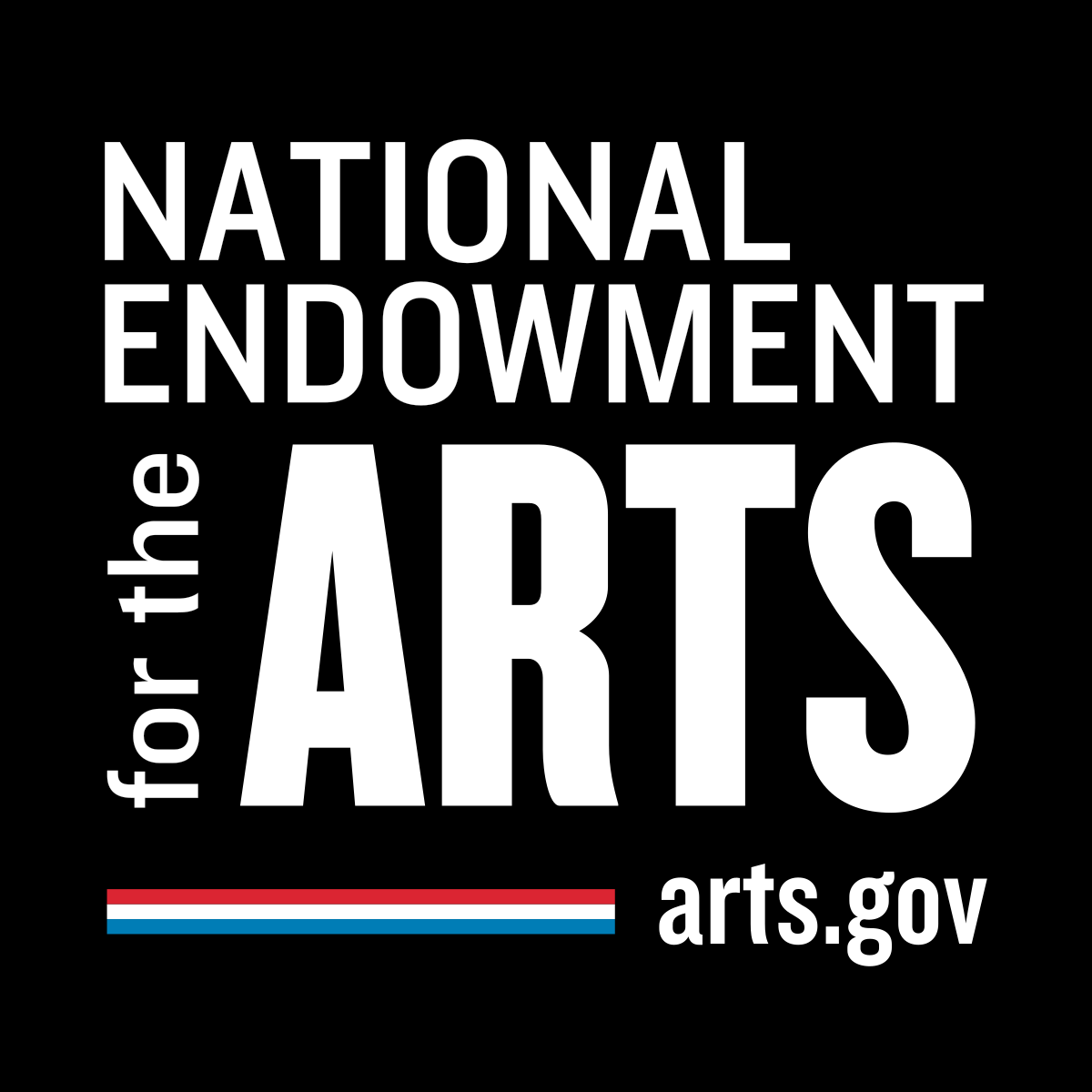Adventures in Puppetry: Part Two
by Guest Blogger Holly Hartman
For Part One, click here.
It is Monday night at the Puppet Showplace Theatre, I am at the third class of Jonathan Little’s “Furry Monsters 101,” and I don’t know when I have last laughed this much. I have forgotten about my long day at the office and the sardine subway ride that capped it and have succumbed to the hilarity of playing with monster puppets.
Class Three: Where Is My Head?
Last week we saw ourselves—or rather, our puppets—on the screen of a video monitor for the first time. Like an infant, I was riveted by my own image (in this case, I was a shaggy orange creature with a bow tie). This week we’re sharing the camera in small groups. Our puppets’ movements onscreen are slow, absurd. I’m reminded of how it takes practice for young children to learn where their limbs are in space.
Many of our puppets look like dopey pets: mouths ajar, heads cocked, too clumsy to heed Jonathan as he urges us to move the puppets together and make them look at the camera. My golf-ball-like eyes can’t find the camera; my furry neck cranes in the wrong direction, as if the puppet is captivated by a faraway song. (Note: the students who’ve taken the class before--one is on his fourth enrollment--are a testimony to the benefits of practice. But most of us newbies are pretty klutzy.)

Things a Director Would Never Say to a Human Actor, Yet Prove Helpful When Spoken About a Puppet:
“Your neck looks broken. Hey Chris, would you go un-break his neck?”
“Oops, let me adjust your eyeballs.”
“Next time, remember to open your mouth when you sing.”
More Lucid in Gibberish
Seeing our puppets in groups is also a lesson in how tricky it is to establish spatial relationships among them, in part because we are manipulating them overhead. Many of our puppets end up talking nose-to-nose (or nose-to-where-a-nose-might-be), or leaning away from each other, or failing to make eye contact. As a group, they don’t look very socialized.
We sing “Frere Jacques” with simple choreography that nonetheless goes astray as often as not. (Some of us are self-conscious. “But it’s a puppet,” Jonathan counsels. “It wants to sing and dance.”) Then we try an exercise in which we pair off and have a conversation in gibberish: one puppet speaks nonsense words, the second riffs off of that, and so on. This becomes interesting fast. When the two puppeteers are attuned to each other, a relationship between their puppets begins to arise.
I find it oddly liberating to speak in a nonexistent language. With words cut off from meaning, it’s easier to play with voice and gesture. Plus I like the surrealism of it. At times I brush up against what for me is the most gratifying part of the creative process, when my cognitive mind fades away; and at those times I cannot quite tell whether I am playing with the puppet or the puppet is playing with me.
Class Four: Think Less, Skit More
I thought we were going to start our fourth class with more camera work, but Jonathan greets us by saying that last week he could see us thinking too hard. So instead we’ll begin with vocal and movement practice, then write skits and perform them onstage, then rewrite them and perform them on camera. Well! Is that all for the first hour?!
Soon we have broken into groups to write and rehearse our skits while Chris and Jonathan make the rounds to check on our progress. I feel grateful at how formal instruction accelerates learning, especially when Chris advises us on manipulating our puppets (“When you open the mouth all the way on that one it looks crazy, see?”).
The skits end up being pretty hilarious. There’s an operatic saga of family dysfunction, complete with Wagner-length high notes; a Shakespearean trio trying to throw off a gypsy curse; and a tale of infidelity in the American West that features a make-out scene so heated the furry lovers have to pause for a breath. All of this, out of thin air.
Puppet Party
Coordinating my puppet’s jaw, arm, and body movements while I am talking remains a challenge. “Holly, your puppet is on roller skates,” Jonathan says after I glide my blue monster across the stage, having forgotten to give it the natural side-to-side motion of walking. (Which would have been okay if roller skates had featured in the scene.) Some puppets appear to be victims of quicksand, sinking out of the camera frame over time.
Before long, nine puppets are on camera at once. It turns out that much consolidation is possible when we angle our bodies sideways (I recall Jonathan telling us in the first class that “puppetry is the art of working in someone’s armpit”). But onscreen, the puppets don’t look crowded. In fact, they look pretty relaxed and happy as they mingle, sharing puppet observations on party clothes and nachos.
As my rudimentary skills increase, so does my appreciation for the video monitor as a teaching tool. In a nutshell: you can see where you are going wrong and fix it, then and there. Crookneck-squash neck, fixed. Zombie arms, fixed. For someone new to performance, this is like magic.
What the Puppet Wants
I took the class partly in the hope of demystifying puppetry for myself, at least a little bit. In this I have both somewhat succeeded and happily failed.
As to the success: In four whirlwind classes, I have been introduced to the skills necessary to operate hand-and-rod puppets (those icons of my circa 1975 worship of all things Muppet). I now have a novice’s sense of how to make this kind of puppet speak, move, and interact. I see that it takes a tremendous amount of practice to make these actions appear realistic, and that it’s a tremendous amount of fun.
Yet there’s something about puppetry that resists demystification. In skilled hands, a puppet in motion has a life of its own--with its own disposition, its own demands, and the capacity to outwit its puppeteer--and I am happy to say that this aspect of puppetry remains mysterious to me.
UPCOMING FALL CLASSES:
Click Here for a full list of upcoming classes.
Introduction to Puppetry Arts
Instructor: Brad Shur, Artist in Residence
Four sessions, September 16 - October 7
Monday nights, 6:30 to 8:30 pm
What makes a great puppet show? Participants will be introduced to the exciting and multifaceted world of puppetry through hands-on exploration of the materials and performance methods used by professional puppeteers. Participants will survey basic puppetry construction methods, build their own puppets, and learn the basic techniques for making puppets come to life.
Mask and Physical Theatre Intensive
Instructor: Avital Peleg
Four sessions, September 18 - October 9
Wednesday nights, 6:30 to 9:00 pm
This workshop invites participants to immerse themselves in the physical and visual world of mask theatre, discovering the power of their own poetic body through a non-verbal approach to acting. Participants will focus on in-depth and detail-oriented physical performance with full-face white neutral masks. Beginning with solo scenes, adding objects, and building towards duo and ensemble work, participants will heighten their awareness of timing, breath, spatial composition, and audience perception.
Introduction to Shadow Puppetry
Instructor: Brad Shur, Artist in Residence
Four sessions, October 1 - October 22
Tuesdays, 6:30 to 8:30 pm
Shadow puppetry is a centuries-old art form that is constantly evolving to incorporate new materials and technologies. In "Introduction to Shadow Puppetry," students will learn the history of shadow performance and encounter examples of the exciting work being developed by today's shadow puppeteers. Through building and performance exercises, the class will explore diverse styles of shadow puppets ranging from simple hand shadows to elaborate cut-out figures with moving parts.
by Guest Blogger Holly Hartman
For Part One, click here.
It is Monday night at the Puppet Showplace Theatre, I am at the third class of Jonathan Little’s “Furry Monsters 101,” and I don’t know when I have last laughed this much. I have forgotten about my long day at the office and the sardine subway ride that capped it and have succumbed to the hilarity of playing with monster puppets.
Class Three: Where Is My Head?
Last week we saw ourselves—or rather, our puppets—on the screen of a video monitor for the first time. Like an infant, I was riveted by my own image (in this case, I was a shaggy orange creature with a bow tie). This week we’re sharing the camera in small groups. Our puppets’ movements onscreen are slow, absurd. I’m reminded of how it takes practice for young children to learn where their limbs are in space.
Many of our puppets look like dopey pets: mouths ajar, heads cocked, too clumsy to heed Jonathan as he urges us to move the puppets together and make them look at the camera. My golf-ball-like eyes can’t find the camera; my furry neck cranes in the wrong direction, as if the puppet is captivated by a faraway song. (Note: the students who’ve taken the class before--one is on his fourth enrollment--are a testimony to the benefits of practice. But most of us newbies are pretty klutzy.)

Things a Director Would Never Say to a Human Actor, Yet Prove Helpful When Spoken About a Puppet:
“Your neck looks broken. Hey Chris, would you go un-break his neck?”
“Oops, let me adjust your eyeballs.”
“Next time, remember to open your mouth when you sing.”
More Lucid in Gibberish
Seeing our puppets in groups is also a lesson in how tricky it is to establish spatial relationships among them, in part because we are manipulating them overhead. Many of our puppets end up talking nose-to-nose (or nose-to-where-a-nose-might-be), or leaning away from each other, or failing to make eye contact. As a group, they don’t look very socialized.
We sing “Frere Jacques” with simple choreography that nonetheless goes astray as often as not. (Some of us are self-conscious. “But it’s a puppet,” Jonathan counsels. “It wants to sing and dance.”) Then we try an exercise in which we pair off and have a conversation in gibberish: one puppet speaks nonsense words, the second riffs off of that, and so on. This becomes interesting fast. When the two puppeteers are attuned to each other, a relationship between their puppets begins to arise.
I find it oddly liberating to speak in a nonexistent language. With words cut off from meaning, it’s easier to play with voice and gesture. Plus I like the surrealism of it. At times I brush up against what for me is the most gratifying part of the creative process, when my cognitive mind fades away; and at those times I cannot quite tell whether I am playing with the puppet or the puppet is playing with me.
Class Four: Think Less, Skit More
I thought we were going to start our fourth class with more camera work, but Jonathan greets us by saying that last week he could see us thinking too hard. So instead we’ll begin with vocal and movement practice, then write skits and perform them onstage, then rewrite them and perform them on camera. Well! Is that all for the first hour?!
Soon we have broken into groups to write and rehearse our skits while Chris and Jonathan make the rounds to check on our progress. I feel grateful at how formal instruction accelerates learning, especially when Chris advises us on manipulating our puppets (“When you open the mouth all the way on that one it looks crazy, see?”).
 |
| Instructor, Jon Little |
Puppet Party
Coordinating my puppet’s jaw, arm, and body movements while I am talking remains a challenge. “Holly, your puppet is on roller skates,” Jonathan says after I glide my blue monster across the stage, having forgotten to give it the natural side-to-side motion of walking. (Which would have been okay if roller skates had featured in the scene.) Some puppets appear to be victims of quicksand, sinking out of the camera frame over time.
Before long, nine puppets are on camera at once. It turns out that much consolidation is possible when we angle our bodies sideways (I recall Jonathan telling us in the first class that “puppetry is the art of working in someone’s armpit”). But onscreen, the puppets don’t look crowded. In fact, they look pretty relaxed and happy as they mingle, sharing puppet observations on party clothes and nachos.
As my rudimentary skills increase, so does my appreciation for the video monitor as a teaching tool. In a nutshell: you can see where you are going wrong and fix it, then and there. Crookneck-squash neck, fixed. Zombie arms, fixed. For someone new to performance, this is like magic.
What the Puppet Wants
I took the class partly in the hope of demystifying puppetry for myself, at least a little bit. In this I have both somewhat succeeded and happily failed.
As to the success: In four whirlwind classes, I have been introduced to the skills necessary to operate hand-and-rod puppets (those icons of my circa 1975 worship of all things Muppet). I now have a novice’s sense of how to make this kind of puppet speak, move, and interact. I see that it takes a tremendous amount of practice to make these actions appear realistic, and that it’s a tremendous amount of fun.
Yet there’s something about puppetry that resists demystification. In skilled hands, a puppet in motion has a life of its own--with its own disposition, its own demands, and the capacity to outwit its puppeteer--and I am happy to say that this aspect of puppetry remains mysterious to me.
UPCOMING FALL CLASSES:
Click Here for a full list of upcoming classes.
Introduction to Puppetry Arts
Four sessions, September 16 - October 7
Monday nights, 6:30 to 8:30 pm
What makes a great puppet show? Participants will be introduced to the exciting and multifaceted world of puppetry through hands-on exploration of the materials and performance methods used by professional puppeteers. Participants will survey basic puppetry construction methods, build their own puppets, and learn the basic techniques for making puppets come to life.
Mask and Physical Theatre Intensive
Instructor: Avital Peleg
Four sessions, September 18 - October 9
Wednesday nights, 6:30 to 9:00 pm
This workshop invites participants to immerse themselves in the physical and visual world of mask theatre, discovering the power of their own poetic body through a non-verbal approach to acting. Participants will focus on in-depth and detail-oriented physical performance with full-face white neutral masks. Beginning with solo scenes, adding objects, and building towards duo and ensemble work, participants will heighten their awareness of timing, breath, spatial composition, and audience perception.
Introduction to Shadow Puppetry
Instructor: Brad Shur, Artist in Residence
Four sessions, October 1 - October 22
Tuesdays, 6:30 to 8:30 pm
Shadow puppetry is a centuries-old art form that is constantly evolving to incorporate new materials and technologies. In "Introduction to Shadow Puppetry," students will learn the history of shadow performance and encounter examples of the exciting work being developed by today's shadow puppeteers. Through building and performance exercises, the class will explore diverse styles of shadow puppets ranging from simple hand shadows to elaborate cut-out figures with moving parts.



















